drift in dreams of other lives and greater times
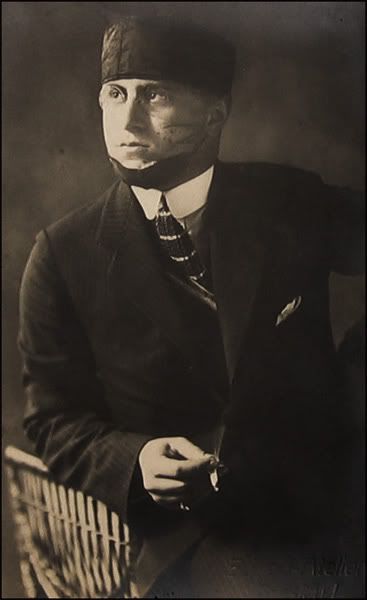
You'll always find an Epeeman where the lovely ladies are,
Boasting of the fights he's had, and showing off his scar.
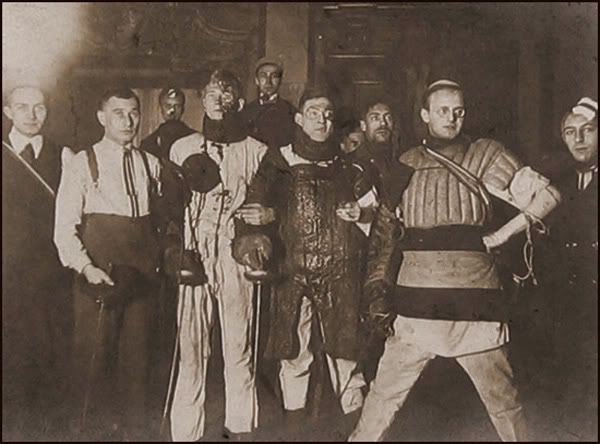
His jacket's a wreck from many a peck of the sharpened pointe d'arret
His pants are torn, his nerves are worn and ears been ripped away;
But should you care to question him, you'll surely hear him say:
"I'm an Epeeman and I guess by damn I'll always be that way."
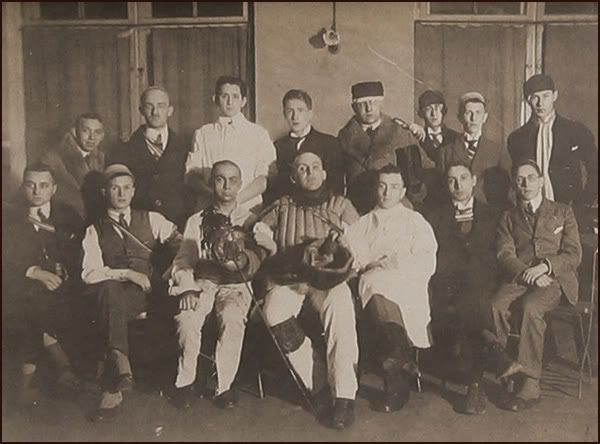
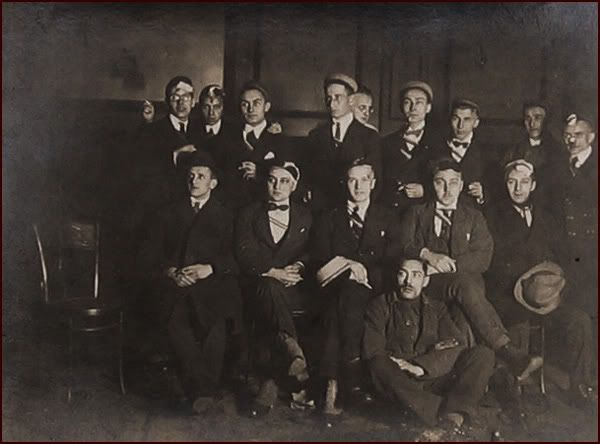
The Epeeman, in frayed and tattered gear
Can lick his weight in wildcats and can drink his weight in beer
And for the foil and sabreman he hasn't any fear
For he's a late edition of the dashing Musketeer.
*†*
At the turn of the 20th century, the dueling scar (or bragging scar or renommier schmiss) was popularized by upper-class Austrians and Germans who saw it as a mark of their class and of their honor, due to the social importance of dueling societies at Austrian universities at the time. If you were a doctor, lawyer, or professor, the dueling scar was a tattoo that signified your inclusion in an elite social rank, and visitors to university cafes would expect to see young men with bandaged faces.
The sport at the time was very different from modern fencing. The men used heavy sabres, and took turns chopping at each other five times a piece, repeated over and over. While padding was worn, the goal was to be injured. Kevin McAleer (author of Dueling: The Cult of Honor in Fin-de-Siecle Germany) writes,
"The idea was to stand your man and show courage - not to inflict a wound, but to be wounded. That's the very strange part of it - the true winner was he who walked away with a nice juicy scar, to show that he'd stood the test. The point was not to get the other guy, but to show that you could take it. You'd get these guys who looked like they'd walked into a propeller. It was pretty gnarly, but the guys were damn proud to look that way."
"The scars showed you had courage and education, and were good husband material. A lot of these kids were rather good-looking, and you didn't have to ruin your whole face in dueling. The scars usually accumulated on the left side of the face, so from the right profile, he still looked good. And even if it was an ugly, knotted scar, women were attracted by everything it implied, and the pride with which the wearer bore it."
Students too afraid to actually duel would cut themselves with razors or contract doctors to form the wounds, and then would repeatedly tear open the wound to irritate them, as well as using salt, wine, and even sewing horse hair into them to ensure a prominently keloided scar. It was very important for these wounds to be noticeable, as the belief was that class/caste and honor were directly linked - the dueling scar was evidence that the wearer had the foundation to fulfill his destiny as one of Germany's ruling class.
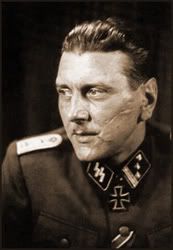
Renommierschmiss on Otto "Scarface" Skorzeny,
SS officer who later formed ODESSA, which helped
eminent Nazis resettle in South America.
One of the best modern examples (while dueling of various sorts existed around the world, the cult of the dueling scar was largely unique to central Europe, although it did exist for a brief time at other elite universities such as Oxford). Dueling cults died out by the second World War, although even today many (primarily older) Germans still consider the scars attractive, and it certainly has continued on a smaller scale. In addition, it was both fetishized and popularized through stories and films.
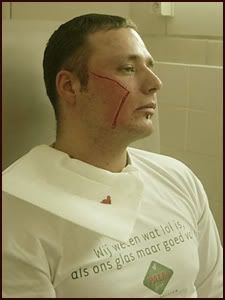
Modern renommier schmiss
† ♥ †